Abstract
This article focuses on teacher educators’ reflections on prospective teachers’ cognitive engagement in the teaching and learning of mathematics during the pandemic. Using three interacting aspects that can foster learners’ cognitive engagement as a lens, observations and reflections from two teacher educators and anonymous screenshots of students’ work were gathered and analysed by a mathematics teacher educator. The prospective teachers’ self-regulated learning, engagement in solving tasks, and participation in productive discourse were positively surprising, showing the cognitive presence of the learners during virtual teaching. The influence of digital platforms like Blackboard and digital tools like GeoGebra, Desmos, Padlet, Google Docs, Google Forms and Google Sheets in teaching helped us observe the learners’ cognitive engagement in real time.
Contribution: The GeoGebra Class function and the Desmos Teacher feature helped us to observe the prospective teachers’ cognitive engagement during the online teaching. However, continuously and rapidly creating digital content on said digital platforms can be demanding for educators.
Keywords: Cognitive engagement; prospective teachers; digital platforms; digital tools; virtual teaching.
Introduction
The coronavirus disease 2019 (COVID-19) pandemic has created challenges and opportunities for educators. On the one hand, the disruption has greatly impacted the day-to-day activities of schools, teachers, students (learners) and educators. On the other hand, the availability of different digital learning management platforms and other digital tools has allowed continuing schooling virtually, especially in those parts of the world where access to such technology is satisfactory. Often, the virtual learning environment is a substitute for the in-person classroom environment, thereby creating the challenge of engaging students cognitively during virtual teaching (We will use the term virtual teaching throughout, although terms like online learning, online education, etc. could be used interchangeably in the context of our study).
Information and communication technology in mathematics education
Information and communication technology (ICT) has a huge impact on education. In mathematics education, ICT particularly supports mathematics teaching in many ways: composing, revising, editing, publishing, calculating, making connections, visualising data, synthesising and problem-solving (Joshi, 2017). Kaino (2008) summarised the four ICT revolutions in connection to the history of the International Commission on Mathematical Instruction (ICME), explaining how the fourth industrial revolution or waves (according to Johnston-Wilder & Pimm, 2005; Oliver & Espinosa, 2021) of ICT have become the globalisation force in creating a single global community. This effect was more pronounced during the COVID-19 pandemic years, starting in March 2020. Nathalie Sinclair claimed that we would see the return of technology in mathematics education during a virtual European Society for Research in Mathematics Education event at the beginning of February 2021 (Sinclair, 2021). She reflected somewhat humorously on how people during this COVID-19 era claim that ‘technology will one day rescue humanity’ (Sinclair, 2021). After experiencing digital teaching fully during the last half of the Spring 2021 semester, it is possible to say that such statements are understated.
Way before this pandemic, the National Council of Teachers of Mathematics (NCTM, 2014) suggested that technology is an essential tool for learning mathematics in this century, and all schools must ensure that all their students have access to technology. But access to technology is not uniform across the world. Also, ICMI has dedicated two studies, ICME study 1 and ICME study 17, to the integration of ICT in mathematics education. This fact indicates how ICT improves conceptualisation and problem-solving in mathematics education (Kaino, 2008). As Mishra and Koehler (2006) indicated already 15 years ago, teachers and educators need to have technological pedagogical content knowledge (TPACK) for using various technologies to teach, represent and facilitate knowledge creation of specific subject content. The pandemic certainly rushed the teachers’ needs for the development of TPACK going forward (Cheng et al., 2022). Compare, for example, how reluctant workers are towards video meetings now to before the pandemic.
The availability of different digital learning management platforms and other digital tools in ICT has made it possible to continue schooling virtually, especially in those parts of the world where access to such technology is satisfactory. However, Drijvers (2015) stated that ‘the integration of technology in mathematics education is a subtle question, and that success and failure occur at levels of learning, teaching, and research’ (p. 147). Drijvers identifies factors that promote or hinder the successful integration of digital technology in mathematics education: the design, the role of the teacher, and the educational context.
Research questions
Robinson-Neal (2021) recommended four research questions specific to the educational sphere. Our research aligns with the third question, which states: ‘In what ways has the pandemic guided changes in classroom practice in primary, secondary, and post-secondary classrooms since instructors across the educational spectrum have had to adjust the ways they teach?’ (Robinson-Neal, 2021, p. 3). We had a similar experience in our teaching during this pandemic season. We have, for the first time, engaged prospective student teachers in the teaching and learning of mathematics virtually (online) almost all the time. Using digital learning platforms was common before the pandemic. However, student engagement is a broad concept (Attard, 2012), and studying it is problematic during this pandemic. In fact, student attendance in the virtual classroom seemed to be better than the in-person classroom attendance. But, how engaged (cognitively) the students are in such digital classrooms is not yet known in depth.
In our teaching, a digital platform called Blackboard and its online lecturing platform called Collaborate and digital tools like GeoGebra, Desmos, Scratch, Trinket.io, Padlet, Google Docs, Google Forms and Google Sheets were used collaboratively. In this article, we focused on the use of two digital tools: GeoGebra and Desmos. Hence, we specify our research question as follows: To what extent can GeoGebra and Desmos contribute to boosting prospective teachers’ cognitive engagement during virtual teaching?
The results from this article can contribute to the kinds of instructional adjustments educators in mathematics (and other subjects) at the tertiary level have to make because of the shift to digital. The goal is to investigate if the digital tools mentioned assist in tracking the prospective teachers’ cognitive engagement during virtual teaching. In addition, we dare to share this virtual teaching and learning experience because it has become so much closer to being a norm for educational systems in the 21st century. Maybe COVID-19 can cause reforms across nations, and maybe it becomes a norm to do more remote, virtual, digital or blended learning at an unprecedented level, especially at the tertiary level (Mulenga & Marbán, 2020).
Theoretical framework and literature review
Students’ cognitive engagement
Engagement is difficult to study in a limited time because it is a multidimensional concept including cognitive, affective and behavioural factors (Attard, 2012; Fredricks et al., 2004). Especially, the study of students’ mathematical engagement has a higher stake since it is considered a precursor of students’ performance in assessments and participation in science, technology, engineering and mathematics (STEM) education (Watt & Goos, 2017). Abbott (2017) describes different forms of engagement: intellectual, emotional, behavioural, physical, social and cultural. Among these types, intellectual engagement points to students’ curiosity, emotional engagement refers to students’ enthusiasm, and social and physical engagements refer to working collaboratively with social and physical activities. Bond et al. (2020) argued that since the concept of student engagement is complex and different definitions seem to exist, each researcher or project should state their own working definition. Referring to Ainley, 2012, Helme and Clarke (2001) pointed out that:
[t]he term engagement usually refers to the extent to which a student is actively involved with the content of a learning activity, where active involvement suggests that the person acts to maintain or extend their contact with the object in order to increase their knowledge of it. (Helme & Clarke, 2001, p. 133)
Cognitive engagement includes the student’s mental effort in learning activities (Hollister et al., 2022). It incorporates thoughtfulness and willingness to exert the effort necessary to comprehend complex ideas and master difficult skills (Mahatmya et al., 2012). Fredricks et al. (2004) discussed that cognitive engagement stems from school engagement and instruction, which stresses investment, self-regulation or being strategic. For them, ‘cognitive engagement can range from simple memorisation to the use of self-regulated learning strategies that promote deep understanding and expertise’ (Fredricks et al., 2004, p. 61). Appleton et al. (2006) measured student cognitive engagement in terms of control and relevance of schoolwork, future aspirations and goals, and extrinsic motivation (Reschly & Christenson, 2012). In this work, virtual cognitive engagement means the students engage in tasks (activities) to foster their mathematical understanding (conceptual or procedural), which demands self-regulation and collaboration with others via the online discourse.
Students’ cognitive engagement during online teaching
Actually, during the online teaching, what mattered most for us was the cognitive aspect of student engagement. This refers to active mental engagement. Clarke (2002) suggested four forms of cognitive engagement: self-regulated learning, task focus, resource management and recipience. Bond et al. (2020) used three indicators of student cognitive engagement: purposeful, critical thinking and self-regulation. However, Helme and Clarke (2001) outlined three interacting aspects that can indicate the cognitive engagement of students: individual learning (self-regulated learning), the learning environment and the tasks. This definition specifies the basis for observing, investigating and analysing prospective teachers’ cognitive engagement in this study. Hence, a brief presentation of the framework is further needed.
Self-regulated learning
Self-regulated learning can be defined as an individual cognitive controller which transforms the thinking and affective aspects into emotional and motivational behaviours during the learning process (Sahdan & Abidin, 2017). It is one of the strategies that can help implement a student-centred learning approach in the in-person or online learning environment. Since these prospective teachers were, in our experience, most likely to be alone during the virtual teaching sessions, their participation with higher-order or metacognitive components is crucial. Their plan, setting goals, organising, self-monitoring and self-evaluating are critical aspects of various points during virtual learning. According to Zimmerman (1990, p. 4), a self-regulated learning ‘perspective on students’ learning and achievement are not only distinctive, but it has profound implications for the way teachers should interact with students and the manner in which schools should be organised’. These implications intensify when teaching shifts suddenly to virtual.
Studying the self-regulation of learners during digital sessions is not an easy matter. Of course, their attendance in the digital classroom, in our case, the Blackboard Collaborate room, shows it has increased compared to the usual in-person teaching, with close to 100% attendance most of the time. However, Helme and Clarke (2001) shed light on the preciseness of studies that claim time-on-task or student self-reports as indirect measures of cognitive engagement. They pointed out that self-regulated individuals actively seek learning opportunities to achieve the desired learning goals, unlike the students who use help-seeking and effort-avoiding strategies (superficial engagement). Further, self-regulated students systematically use metacognitive, motivational and behavioural strategies to optimise their learning.
Task (activities) focus
The nature of the mathematical tasks to which students are exposed determines what students learn (NCTM, 1991). Student learning is fostered with open-ended tasks that are not only focused on procedures but also foster conceptual understanding. Tasks can be routine, simple, complex or challenging. Smith and Stein (1998) and other authors have developed four different levels of tasks based on cognitive demand: memorisation, procedures without connections, procedures with connections and doing mathematics (NCTM, 2014).
Henningsen and Stein (1997) emphasised the importance of engaging students in mathematical tasks that demand a cognitive process at the level of doing mathematics that engage, students in high-level mathematical thinking and reasoning. They emphasised that tasks and activities are vehicles for students’ cognitive engagement. The course we designed and provided is mostly activity and task based, favouring student-centeredness. It means that in one-day virtual teaching, there will be four to five activities or tasks that demand randomly created group work among the prospective teachers. In such types of tasks, students plan, monitor and solve the tasks independently. How well each student group engages (cognitively) may vary between groups and depend on the richness of the task provided.
Virtual learning environments in relation to discourse
The learning environment is one of the vital elements that can contribute to promoting or restraining students’ cognitive engagement (Edwards & Mercer, 1987). Collaborative small group and whole class interactions define an effective learning environment. Computer-mediated communication (CMC) has given new opportunities for students to participate in instructional activities that demand higher cognitive engagement (Abdelhafez, 2021; Pavel & Wysocki, 2007; Richardson & Newby, 2006). Effective mathematics teaching facilitates discourse among students and teachers to build a shared understanding of mathematical ideas by analysing and comparing student approaches and arguments (NCTM, 2014).
In the course, we are involved in real-time virtual instruction on platforms like Blackboard Collaborate and Zoom. All these platforms are equipped for whole class or small group chat spaces. In particular, the breakout rooms that are provided by the digital platforms, that is, splitting the group of students into smaller groups for group work, and making random groups when needed, foster a virtual discourse and virtual collaboration among the virtual community of inquiry (Pavel & Wysocki, 2007). Students’ behaviour like questioning, answering teachers’ questions, exchanging ideas, justifying an argument, explaining procedures and concepts, and even expressing gestures using the platforms can be used as indicators of cognitive engagement (Helme & Clarke, 2001). However, it is unclear in virtual teaching how the pedagogical model developed by Stein et al. (2008) for orchestrating classroom discussion using five key practices, anticipating, monitoring, selecting, sequencing and making connections between student responses, can be implemented effectively.
Method
Creswell and Poth Cheryl (2018) defined a case study as ‘a qualitative approach in which the investigator explores a real-life, contemporary bounded system (a case) over time, through detailed, in-depth data collection involving multiple sources of information’ (p. 96). This study uses ICT to boost prospective teachers’ cognitive engagement during a second-year mathematics course focusing on mathematical content, statistics and probability. It considers the case of exploiting the provisions of digital tools like GeoGebra and Desmos platforms for learning.
Almost all teaching was done virtually from January to May 2022. The shift from face-to-face to digital or virtual teaching is the phenomenon that educators are encountering. Further, to define it more precisely, how student teachers are engaged cognitively during the virtual teaching on Blackboard Collaborate is the question about which educators wonder. How can they make sure that their students are engaged cognitively? The goal was to describe what the educators experience in light of the theoretical frameworks described above and investigate the opportunities embedded in different ICT tools like GeoGebra and Desmos.
Data collection and analysis
Primarily, the experience of instructors is considered. In the spring semester, three teacher educators were tasked with teaching a course on statistics, probability and stochastic variables for the year two student teachers in the teacher education department. One hundred student teachers were grouped into three classes. In the first half of 2021, we, for the first time, started to engage prospective teachers in the teaching and learning of programming for middle and lower secondary schools. Recently, programming was introduced into the Norwegian curriculum. Hence, Scratch and Python were introduced in the course to connect concepts like combinatory statistics and probability.
For objectivity, we identify ourselves as Teacher Educators 1, 2 and 3 (TE1, TE2, TE3). In addition, anonymous screenshots of prospective teachers’ engagement while solving problems or tasks on the virtual platforms, like GeoGebra and Desmos, were collected. Due to the provision of the platforms, the works of all those prospective teachers who attained virtual teaching were captured and included in the study. But the data was collected during the semester randomly. The observations and reflections of TE1 and TE2 are used as data. TE3 is the author of this article; hence, for objectivity, TE3’s observations and reflections are not included.
Content analysis helps to evaluate the presence of words, phrases, themes, concepts or images within a piece or multiple pieces of given qualitative content data (Cohen et al., 2018). The observations and reflections of TE1 and TE2 are analysed via content analysis. The three aspects that can help us to understand the cognitive engagement of the prospective teachers, self-regulated learning (the individual), the learner’s engagement with the tasks and their discourse on the virtual learning environment, as outlined by Helme and Clarke (2001), are used as a synchronising framework for the data collection and the data analysis. In addition, the documents that contain tasks and activities made by the educators using the GeoGebra Class function and Desmos Teacher feature are used. The data from online sources GeoGebra (http://www.geogebra.org) and Desmos (http://teacher.desmos.com) on the platform Blackboard Collaborate were collected, mostly as screenshots (see Figure 1).
 |
FIGURE 1: A task to reflect in connection to Pascal’s triangle during the virtual teaching on the digital platform Blackboard Collaborate using the Class function in GeoGebra. |
|
Findings
In fact, prospective teachers’ attendance in the virtual classroom seems to be better than in-person classroom attendance. First, the results from the Class function in GeoGebra and the Desmos Teacher feature are presented. Then the observations and reflections of the teacher educators are presented using the theoretical frameworks defined above in connection to students’ cognitive engagement. Note that we preferred to present the data from the digital tools mentioned to grasp the teacher educators’ reflections, as they refer to these tools in their reflections. In addition, the theoretical framework presented above in connection to the students’ cognitive engagement is presented in such a way that it gives meaning, at least to the author.
Data from the Class function in GeoGebra
In connection to the task labelled as ‘Tankeksperimentet’, roughly translated as ‘the tank experiment’ (although there is an intended pun here, where ‘Tanke-eksperiment’ would translate to ‘thinking experiment’), students were given four tasks. The teacher educators could see all their students working on the four tasks in real time on the GeoGebra Class platform. These tasks are based on the context of water pouring into a stack of tanks or buckets, supported by diagrammatic representations. Task 1 asks for the water share in the tanks; Task 2 asks for another row of buckets at the bottom and calculates the amounts of water in this row; Task 3 substitutes water through a collection of hoses that will go from the top down so that it ends up with hoses for every possible path for the water; Task 4 asks how the number of litres of water in the buckets is connected to the number of hoses.
Appendix 1 shows the screenshot of one class with 27 students. Among those, the work from Student 5 and Student 2 is displayed in Figure 2. The difference in the progress of the students can be seen easily. These data give insight into how the prospective teachers are engaged in solving the task, and their reasoning can also be observed almost in real time.
 |
FIGURE 2: Student 5’s and Student 2’s solutions for the four tasks. |
|
Another task requested students to find the different ways of colouring a figure with four squares with one square blue and one square red. This assignment is a combinatoric task, and the website link generated on GeoGebra is shared with the students. The screenshots of their work are provided in Appendix 2, after two and four minutes. Figure 3 shows the response progress of three students after two and four minutes.
 |
FIGURE 3: Screenshot of the work of Students 4, 8 and 11 at two and four minutes after the task is provided to them. |
|
Data collected using the Desmos platform
Desmos, an advanced online graphing calculator, is another virtual tool implemented during our teaching. We collected data from approximately 100 students in three different groups using several tasks. Figure 4 and Figure 5 provide examples of the tasks and evidence of real-time student engagement during virtual teaching. In Figure 4, we see one activity where students are given an interactive balance, where they are supposed to move the weights around to balance the scales – providing a foundation for understanding the concept of average through balancing. In Figure 5, we see results from one of the ‘screens’ in the activity where students vote for which scale is correctly balanced. We also note that the students are automatically given names of famous scientists, providing the opportunity to use the activities as discussion points without anyone feeling they are being exposed.
 |
FIGURE 4: Data on Desmos during one of the virtual classrooms showing how a group of students solved the balancing tasks to understand a set’s mean value. This example is Screen 10 of 14. |
|
 |
FIGURE 5: Data collected on Desmos during one of the virtual classrooms with anonymity. |
|
Observations on how students engage in solving tasks
TE1 reflected that the digital tools we have created to keep ourselves informed on student progress was an eye-opener. The real-time teaching platforms GeoGebra and Desmos (including Google Sheets and Padlet) helped us see how students are progressing and where they struggle. When constructing teaching materials, the online setting has led to new ways of doing handouts, problem-solving-based instructions, and using group work during virtual teaching. For example, we used the Class mode in GeoGebra to see how many were on task and what they replied (see Figure 6). In this mode, you can track how much of the prescribed work has been done by all the students (left) and how one particular student is responding to a task (right).
 |
FIGURE 6: GeoGebra data collected showing the progress of all students’ engagement in solving a task related to making histograms (left) and one student’s engagement in estimating where the mean of a data set lies given the boxplot of that data (right). |
|
GeoGebra Class also has the functionality to make tasks where students can respond in handwriting, which many students use, either from tablets or just drawing with the computer mouse. In Desmos, we used the activity builder in Teacher mode to reuse the library of Desmos activities and build our own (see Figure 4 and Figure 5). Names are anonymised in Desmos so that you can use the progress through the activities as a focus for whole class discussions. Desmos has an increasing library of self-paced activities to be freely used. In Scratch (http://scratch.mit.edu) and Python (the online Python distribution of https://trinket.io/ is the one used in the course), we have created simulations in probability and statistics that students themselves can do and then comment in chats or on the microphone about how they react to them. Some programs were created together, and others were prepared for the students. The use of Google Sheets and cloud variables in Scratch has made it possible to facilitate experiments where we can collectively work out the frequencies of non-standard situations.
Observation of self-regulated learning
TE2 believed that it is important to see the students and try to read their body language when teaching. This phenomenon is a key component in understanding whether or not the students follow the lesson actively. The reading of body language is, in our experience, very difficult while you are presenting material during a virtual lesson. There are several reasons for this difficulty: (1) you have to pay attention to the screen you share, (2) the students often switch off their cameras and (3) some students don’t like to say things aloud. This difficulty might also be true in ordinary teaching but seems to be magnified when we teach digitally. Because of this situation, quite a bit of time at the start of the semester was spent emphasising the importance of the students’ participation or active engagement during digital teaching. It was clear that if students wanted the best possible learning outcome, they needed to ask if they didn’t understand (like telling the instructor to go slower, faster, etc.).
TE1 reflected that students could appear active, but the online presence might be misleading. For instance, asking students to ‘give a thumbs up if you follow’ results in 100% affirmation, but designating them into groups means a quarter of the group disappears mysteriously, a clear effort-avoiding tactic. There also appeared to be a usual ‘gang of suspects’ that are the most active, as would be the case in face-to-face campus teaching. It could be that some of those students who disappear do so because they are put into groups with which they are not happy. When they disappear from the online platform, there is no means to call them back. Or they may also use other social media platforms that are more plausible to them.
Observation of the learning environments using the discourse perspective
The TEs reflected that some students are more active than others during small group and whole class discussions. Only a few use the chat features embedded in the platforms. TE1 reported that the prospective teachers appreciate being put into groups randomly during the breakout rooms, leading them to collaborate with people with whom they normally would not interact. TE2 reflected his preference to walk around the classroom while the students are working to observe different groups, to get a feel for their problems, to determine which group or groups should present and even to choose groups with different solutions and strategies. These goals are difficult to achieve in digital teaching. In general, some students were not turning on their cameras but participating in the discourse actively via audio. They asked their fellow students and the teacher questions whenever they are in the breakout rooms. They reflected and explained their solutions and contributed ideas and made evaluative comments.
Discussion
In the whole online teaching period, ICT utilisation is magnified: the learning platform Blackboard, its Zoom-like feature Collaborate, and different digital tools like Padlet, Google Drive, Google Sheets, Excel, GeoGebra, Desmos, Trinket, Scratch, Python and others were used. In this work, the results are discussed based on the use of the two digital tools, GeoGebra and Desmos, in relation to the three aspects of the students’ cognitive engagement.
The affordance and limitation of GeoGebra and Desmos in relation to tasks (activities)
Cognitive presence refers to the students’ questioning, reasoning, connecting, challenging and developing problem-solving techniques (Lipman, 1991) during digital teaching. Pavel and Wysocki (2007) indicated that selecting content and supporting discourse constitutes cognitive presence in virtual teaching. The learning platforms have enabled us to design and provide tasks to students. In addition, the breakout rooms in Blackboard Collaborate and Zoom have provided small group work where students engage in activities, solving tasks that the instructors design.
There is huge potential to engage students cognitively in real time: the use of the Class feature in GeoGebra and the Desmos Teacher feature. As shown in Figure 6, GeoGebra provided the opportunity to see the engagement of the students in the given task in real time. The tool shows the progress of the students comparatively (the whole class on the left), and it also helps us to see how each individual (particular student on the right side) is engaged in solving the tasks in real time when we zoom in on specific students.
Tasks can be routine, simple, complex or challenging. Smith and Stein (1998) and other authors have developed four different levels of tasks based on cognitive demand: memorisation, procedures without connections, procedures with connections and doing mathematics (NCTM, 2014). Boaler and Dweck (2016, p. 144) argued that ‘when mathematics tasks are opened for different ways of seeing, different methods and pathways, and different representations, everything changes’. GeoGebra and Desmos have helped us create tasks that can foster student learning. It was possible to design tasks that demanded different levels of thinking. Task 4 in Figure 2 and the Desmos tasks demand procedures with connections according to Smith and Stein’s categories. It was also possible to create open-ended tasks as well as closed ones. Student learning is fostered with open-ended tasks that are not only focused on procedures but also foster conceptual understanding.
However, designing and preparing digital content that can engage students in real time is not an easy task in a very limited time. It demands sufficient TPACK from the educator’s or teacher’s side. Whether it is the Class function in GeoGebra, the activity builder in Desmos, or creating our own simulations in Scratch and Python for virtual teaching, the process demands more effort than in-person teaching. In our experience, it was evident that designing new tasks and activities suitable for real-time learning demands new skills, resources and ample time if we want to engage learners cognitively during virtual teaching. The digital learning environments and tools provide for such possibilities and good development in the circumstances.
The GeoGebra and Desmos tasks showed us that there is a different pace in solving the tasks when the prospective teachers are working individually and in small groups. In virtual teaching, it was also evident that the cognitive engagement of the student teachers as a community of inquiry showed different levels of cognitive activity in relation to Bloom’s (1956) taxonomy of education. Some learners are at the information level, while others are as high as the evaluation level. This fact was evidenced in their engagement of learning outcomes submitted via Scratch, Python, GeoGebra and Desmos. Some of the students reflected that working in small groups with students who had experience with Scratch and Python programming from before helped them to learn faster.
The affordance and limitation of GeoGebra and Desmos in relation to self-regulated learning
Helme and Clarke (2001) emphasised that learners’ wills and skills are crucial in order for them to be successful learners. As Sahdan and Abidin (2017) emphasised, self-regulated learning can be seen as a skill in learning that students can control. Prospective teachers’ self-regulation during this COVID-19 era of forced virtual learning is remarkable. Their virtual attendance, participation in verbalising their thinking, self-monitoring, solving the tasks and engaging in the activities during virtual teaching is visible. The teacher educators utilised different technologies to foster the students’ active cognitive engagement. The use of the Class function in GeoGebra, the Desmos Teacher feature, Padlet and breakout rooms via Blackboard Collaborate and Zoom are among such tools that helped us to undergo asynchronous and synchronous communications.
GeoGebra has provided the opportunity to see the engagement of the students in the given task in real time. It helped us to see how the students are regulating their learning while they engage in solving the tasks in real time. The tool, as shown in Figure 3 and Figure 6, helps us see the students’ progress and not only compare but also follow everyone’s progress in solving the tasks in real time. Depending on the task, it is also possible to follow up on a student’s handwriting on a certain task in real time. That shows students’ self-regulated learning in real time too. However, as reflected by all TEs, the digital platforms do not allow us to see the whole activities, interactions and reactions of the students compared to in-person meetings, which, in turn, limits us in orchestrating a productive mathematical discussion as entailed by Stein and Smith (2008).
The affordance and limitation of GeoGebra and Desmos in relation to discourse perspective
As Lipman (1991) suggested, this helps the community of inquiry to engage in critical thinking and deep learning outcomes. Moreover, the provision of the digital platform, synchronous and asynchronous, contributes to the community of inquiry to engage with the contents for ample amounts of time. In this context, self-regulated learning is somehow visible too. Some learners are consistently active, as T1 referred to them, a usual ‘gang of suspects’.
The discourse in the virtual classroom can also show cognitive engagement among the community of inquirers. Both TEs have reflected on their experiences and observations of the whole virtual classroom and small breakout groups provided by the platforms. As TE 1 evidenced, the students appreciated being put into groups randomly, leading them to collaborate with people with whom they normally would not. The participation of most students was via audio with some with video settings opening their cameras, and some had more dynamic discourse than others. TE2 echoed the limitation of the virtual platform in leading a productive classroom discourse. As teachers, we have the responsibility to develop classroom discourse that meets the criteria described by Smith and Stein (2008): anticipating, monitoring, selecting, sequencing and connecting. The last three phases are especially difficult to attain in real-time virtual teaching.
Conclusion
Our real-time virtual classroom observation and data taken from the virtual platforms and tools show that teaching in a virtual setting after the pandemic led to forced changes in activity style. The use of digital tools and their affordances came to the fore, and we experienced that our earlier approaches to teaching and learning would not be adequate to engage students the way we wanted. In particular, the real-time monitoring of student activity provided by Desmos, GeoGebra, Padlet, Google Sheets and chats was instrumental in keeping a close-to-live relationship with the student group as a whole. The introduction of programming into the Norwegian curriculum made it natural to create simulations and activities as part of the teaching sequences and as ready-made programs for the students to use.
The Class function in GeoGebra and the Teacher feature in Desmos provided an opportunity to monitor students’ cognitive engagement. Nevertheless, there are still issues that should be addressed. For example, preparing digital content and assessments that will engage the students cognitively in a short time is not an easy task at all, as stated by Drijvers (2015). In our opinion, using the same content during in-person teaching would not be optimal. What works for one may not be effective for the other. Hence, support might be needed, for example in the form of job-embedded professional development to boost the teachers’ knowledge as described in the TPACK framework (Mishra & Koehler, 2006).
Acknowledgements
The author acknowledge the contributions of Rune K. and Øistein G. in the preparation of this article.
Competing interests
The author declares that they have no financial or personal relationships that may have inappropriately influenced them in writing this article.
Author’s contributions
S.A.T. is the sole author of this article.
Ethical considerations
This article followed all ethical standards for research without direct contact with human or animal subjects.
Funding information
This research received no specific grant from any funding agency in the public, commercial or not-for-profit sectors.
Data availability
Data sharing is not applicable to this article as no new data were created or analysed in this study.
Disclaimer
The views and opinions expressed in this article are those of the author and do not necessarily reflect the official policy or position of any affiliated agency of the author.
References
Abbott, A.L. (2017). Fostering student interest development: An engagement intervention. Middle School Journal, 48(3), 34–45. https://doi.org/10.1080/00940771.2017.1297666
Abdelhafez, A. (2021). Digitizing teacher education and professional development during the COVID-19 pandemic. Academia Letters, 2021, article #295. https://doi.org/10.20935/AL295
Ainley, M. (2012). Students’ interest and engagement in classroom activities. In S.L. Christenson, A.L. Reschly, & C. Wylie (Eds.), Handbook of research on student engagement (pp. 283–302). Springer US.
Appleton, J.J., Christenson, S.L., Kim, D., & Reschly, A. L. (2006). Measuring cognitive and psychological engagement: Validation of the student engagement. Instrument Journal of School Psychology, 44(5), 427–445.
Attard, C. (2012). Engagement with mathematics: What does it mean and what does it look like? Australian Primary Mathematics Classroom, 17(1), 9–13.
Bloom, B.S. (1956). Taxonomy of educational objectives, handbook: The cognitive domain. David McKay.
Boaler, J., & Dweck, C.S. (2016). Mathematical mindsets: Unleashing students’ potential through creative math, inspiring messages and innovative teaching (1st ed.). Wiley Brand.
Bond, M., Buntins, K., Bedenlier, S., Zawacki-Richter, O., & Kerres, M. (2020). Mapping research in student engagement and educational technology in higher education: a systematic evidence map. International Journal of Educational Technology in Higher Education, 17(2). https://doi.org/10.1186/s41239-019-0176-8
Cheng, P.-H., Molina, J., Lin, M.-C., Liu, H.-H., & Chang, C.-Y. (2022). A new TPACK training model for tackling the ongoing challenges of COVID-19. Applied System Innovation, 5(2), 32. https://doi.org/10.3390/asi5020032
Clarke, D. (2002). Perspective on practice and meaning in mathematics and science classroom. Kluwer Academic Publisher.
Cohen, L., Manion, L., & Morrison, K. (2018). Research methods in education (8th ed.). Routledge. https://doi.org/10.4324/9781315456539
Creswell, J.W., & Poth Cheryl, N. (2018). Qualitative inquiry and research design: Choosing among five approaches, SAGE Publications, Inc.
Drijvers, P. (2015). Digital technology in mathematics education: Why it works (or doesn’t). In S. Cho (Ed.), Selected regular lectures from the 12th International Congress on Mathematical Education (pp. 135–151). Springer. https://doi.org/10.1007/978-3-319-17187-6_8
Edwards, D., & Mercer, N. (1987). Common knowledge (Routledge revivals): The development of understanding in the classroom. Routledge & CRC Press.
Fredricks, J., Blumenfeld, P., & Paris, A. (2004). School engagement: Potential of the concept, state of the evidence, American Educational Research Association.
Helme, S., & Clarke, D. (2001). Identifying cognitive engagement in the mathematics classrooms. Mathematics Education Research Journal, 13(2), 133–153. https://doi.org/10.1007/BF03217103
Henningsen, M., & Stein, M.K. (1997). Mathematical tasks and student cognition: Classroom-based factors that support and inhibit high-level mathematical thinking and reasoning. Journal for Research in Mathematics Education, 28(5), 524–549. https://doi.org/10.2307/749690
Hollister, B., Nair, P., Hill-Lindsay, S., & Chukoskie, L. (2022, May). Engagement in online learning: student attitudes and behavior during COVID-19. Frontiers in Education, 7(851019).
Johnston-Wilder, S., & Pimm, D. (2005). Teaching secondary mathematics with ICT. MPG Books Ltd.
Joshi, D.R. (2017). Influence of ICT in mathematics teaching. International Journal for Innovative Research in Multidisciplinary Field, 3(1), 7–11.
Kaino, L. M. (2008). Information and Communication Technology (ICT) developments, utilization and challenges in ICMI history. Symposium on the Occasion of the 100th Anniversary of ICMI, 5–8.
Lipman, M. (1991). Thinking in education. Cambridge University Press.
Mahatmya, D., Lohman, B. J., Matjasko, J.L., & Farb, A. F. (2012). Engagement across developmental periods. In S.L. Christenson, A.L. Reschly, & C. Wylie (Eds.), Handbook of research on student engagement (pp. 45–63). Springer Science + Business Media. https://doi.org/10.1007/978-1-4614-2018-7_3
Mishra, P., & Koehler, M.J. (2006). Technological pedagogical content knowledge: A framework for integrating technology in teacher knowledge. Teachers College Record, 108(6), 1017–1054. https://doi.org/10.1111/j.1467-9620.2006.00684.x
Mulenga, E.M., & Marbán, J.M. (2020). Is COVID-19 the gateway for digital learning in mathematics education? Contemporary Educational Technology, 12(2), ep269. https://doi.org/10.30935/cedtech/7949
National Council of Teachers of Mathematics (NCTM). (1991). Professional standards for teaching mathematics. NCTM.
National Council of Teachers of Mathematics (NCTM). (2014). Principles to actions: Ensuring mathematical success for all. NCTM.
Oliver, E., & Espinosa, C. (2021). Developing mathematical literacy in the context of the fourth industrial revolution. IGI Global.
Wysocki, C.D. (2007). A Study of Cognitive Engagement in Online Learning. Dissertation, Washington State University, USA.
Reschly, A.L., & Christenson, S.L. (2012). Jingle, jangle, and conceptual haziness: Evolution and future directions of the engagement construct. In S.L. Christenson, A.L. Reschly, & C. Wylie (Eds.), Handbook of research on student engagement (pp. 3–19). Springer. https://doi.org/10.1007/978-1-4614-2018-7_1
Richardson, J.C., & Newby, T. (2006). The role of students’ cognitive engagement in online learning. American Journal of Distance Education, 20(1), 23–37. https://doi.org/10.1207/s15389286ajde2001_3
Robinson-Neal, A. (2021). Reflections on educational practice: COVID-19 influences. Academia Letters, 176. https://doi.org/10.20935/AL176
Royal Society Advisory Committee on Mathematics Education (ACME), & Joint Mathematical Council (JMC). (2020). Survey with teachers on the impact of COVID-19 on mathematics education.
Sahdan, S.B., & Abidin, N.A.B.Z. (2017). Self-regulated learning: A literature review for 21st century learning technology. Advanced Science Letters, 23(2), 912–915. https://doi.org/10.1166/asl.2017.7435
Smith, M.S., & Stein, M.K. (1998). Selecting and creating mathematical tasks: From research to practice. Mathematics Teaching in the Middle School, 3, 344–350.
Sinclair, N. (2021). The technology (re)turn in mathematics education. Plenary talk at the virtual pre-CERME12 event. http://erme.site/cerme-conferences/virtual-pre-cerme12-event/
Stein, M., Engle, R., Smith, M., & Hughes, E. (2008). Orchestrating productive mathematical discussions: Five practices for helping teachers move beyond show and tell. Mathematical Thinking and Learning, 10(4), 313–340. https://doi.org/10.1080/10986060802229675
Watt, H., & Goos, M. (2017). Theoretical foundations of engagement in mathematics. Mathematics Education Research Journal, 29(2), 133–142. https://doi.org/10.1007/s13394-017-0206-6
Zimmerman, B.J. (1990). Self-regulated learning and academic achievement: An overview. Educational Psychologist, 25(1), 3–17. https://doi.org/10.1207/s15326985ep2501_2
Appendix 1
 |
FIGURE 1-A1: Screenshot of the works of Students using the Class function in GeoGebra. |
|
Appendix 2
 |
FIGURE 2-A1: Screenshot of the works of Students after two and four minutes using the Class function in GeoGebra. |
|
|